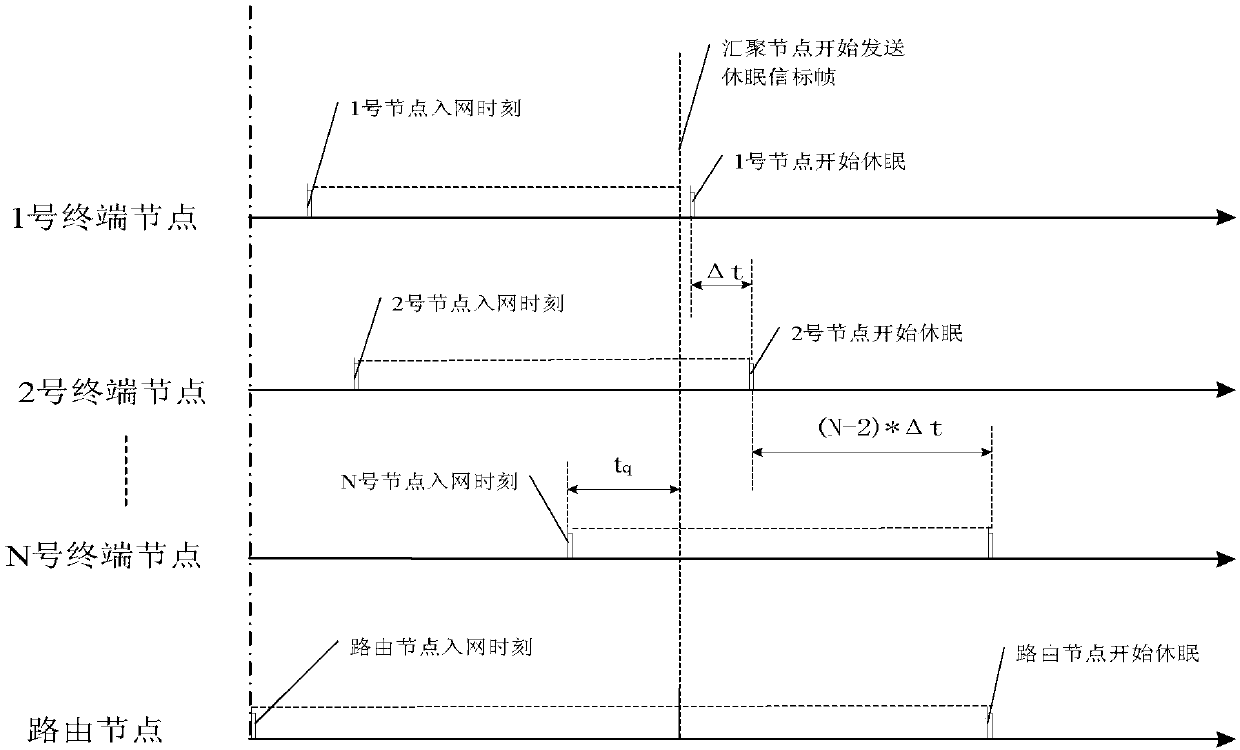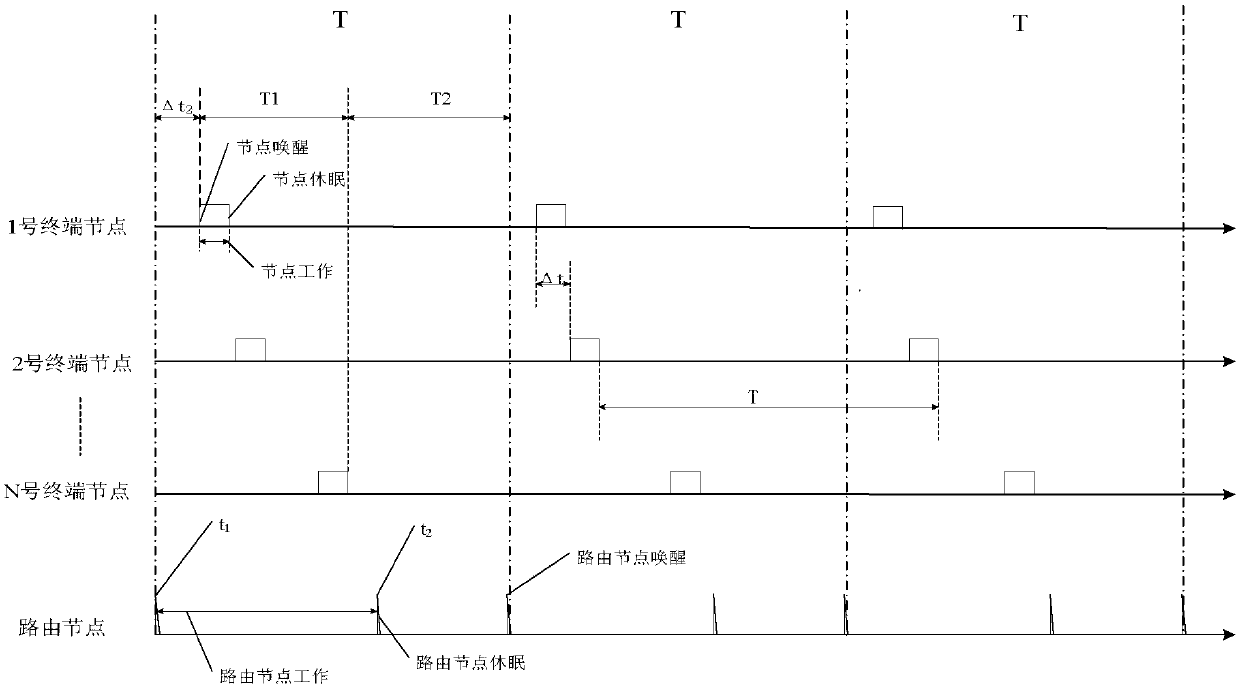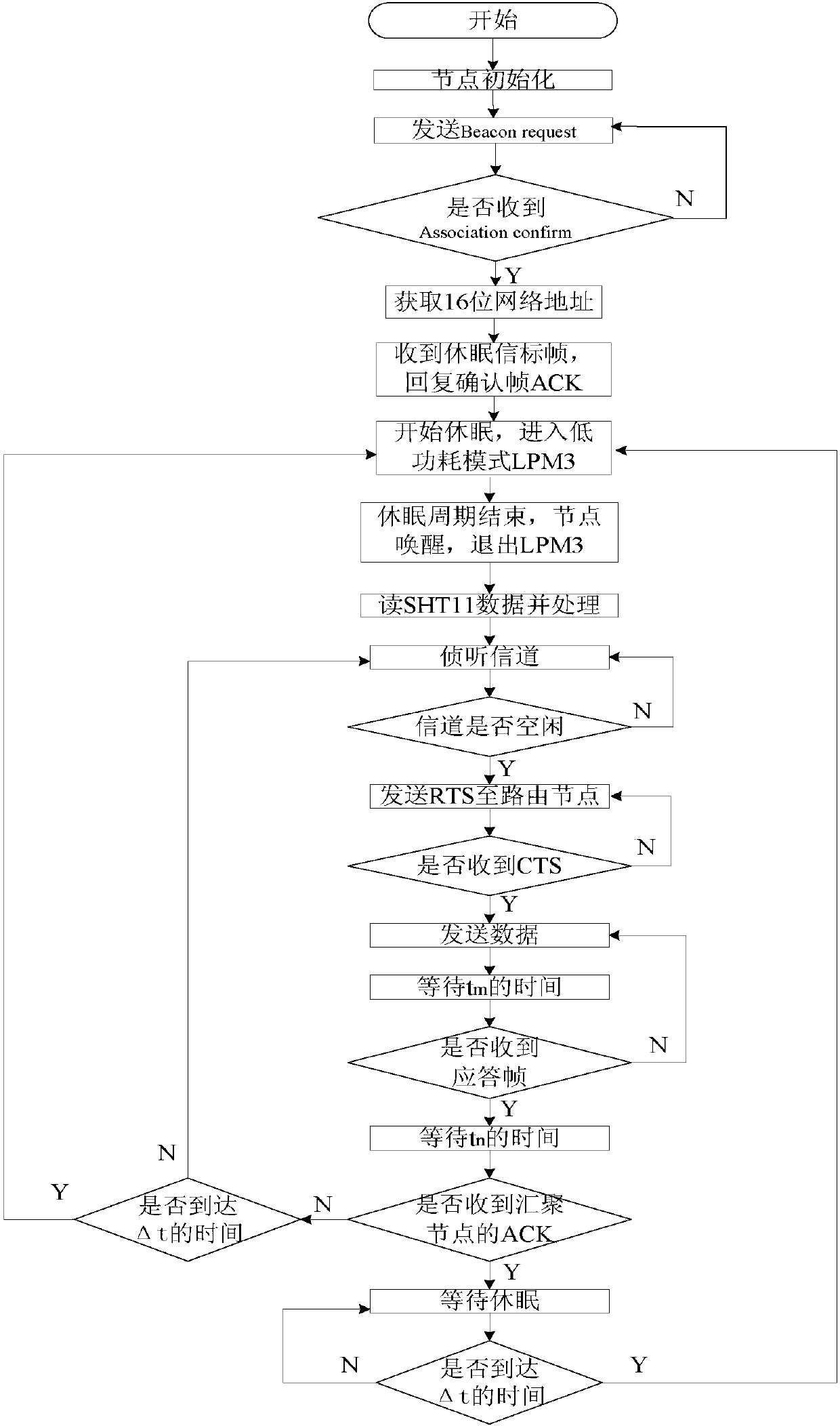Wireless sensor network communication method based on time division dormancy
A wireless sensor and network communication technology, applied in wireless communication, network topology, sustainable communication technology, etc., can solve problems such as waste of energy, network failure, data loss, etc.
- Summary
- Abstract
- Description
- Claims
- Application Information
AI Technical Summary
Problems solved by technology
Method used
Image
Examples
Embodiment Construction
[0087] The technical solutions of the present invention will be described in detail below in conjunction with the accompanying drawings.
[0088] 1. Nodes join the network
[0089] Such as figure 1 Shown is the initial network access and time-sharing sleep diagram of each node in the present invention. The routing node joins the ZigBee network before each terminal node, and the terminal nodes apply for network access at different time points. Each routing node assigns a 16-digit network short address to the corresponding terminal node and reports it to the sink node. The sink node marks the terminal that first enters the network The node is the No. 1 node, and the numbers of the terminal nodes that will subsequently access the network can be deduced by analogy. When the sink node no longer receives the information of the new network node, wait for a period of time t q , if there is still no new node joining, then it is judged that each node is connected to the network.
[...
PUM
 Login to View More
Login to View More Abstract
Description
Claims
Application Information
 Login to View More
Login to View More - R&D
- Intellectual Property
- Life Sciences
- Materials
- Tech Scout
- Unparalleled Data Quality
- Higher Quality Content
- 60% Fewer Hallucinations
Browse by: Latest US Patents, China's latest patents, Technical Efficacy Thesaurus, Application Domain, Technology Topic, Popular Technical Reports.
© 2025 PatSnap. All rights reserved.Legal|Privacy policy|Modern Slavery Act Transparency Statement|Sitemap|About US| Contact US: help@patsnap.com



